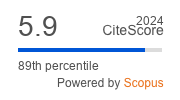Article | Open Access
Fostering Youth Trust in the European Commission: Communication on Social Media as a Key Strategy
| Views: | 4081 | | | Downloads: | 3642 |
Abstract: For the long-term viability of the EU’s democratic system, it is crucial to develop communication strategies aimed at enhancing young citizens’ trust in its institutions, with social media playing a key role. This study is structured around two general objectives: (1) to examine youth political trust in the European Commission and its connection to various potential micro- and macro-determinants, and (2) to explore the categories of social media communication that young citizens perceive as potentially contributing to increasing political trust in the institution. Using a quantitative approach, data are collected from N = 470 individuals (aged 18 to 26) from Germany, France, Italy, Spain, and Poland. Statistical analyses included binary logistic regression models, ordinal regressions, Kruskal-Wallis tests, and Dunn’s post-hoc tests. Results indicate that socioeconomic status, employment status, and education are positively related to trust in the institution, while perceptions of the possibility of citizen participation and economic performance also exhibit a positive association. Among social media communication categories, input-seeking and dialogue-based approaches show the greatest perceived potential, both among young citizens who distrust the Commission and those who trust it. These findings provide valuable insights for designing social media communication strategies aimed at strengthening political trust in the institution, from the perspective of audience targeting and content strategy.
Keywords: communication; democracy; European Commission; European Union; political trust; social media; youth
Published:
© Andrea Moreno-Cabanillas, Antonio Castillo-Esparcia, Álvaro Serna-Ortega. This is an open access article distributed under the terms of the Creative Commons Attribution 4.0 license (http://creativecommons.org/licenses/by/4.0), which permits any use, distribution, and reproduction of the work without further permission provided the original author(s) and source are credited.


